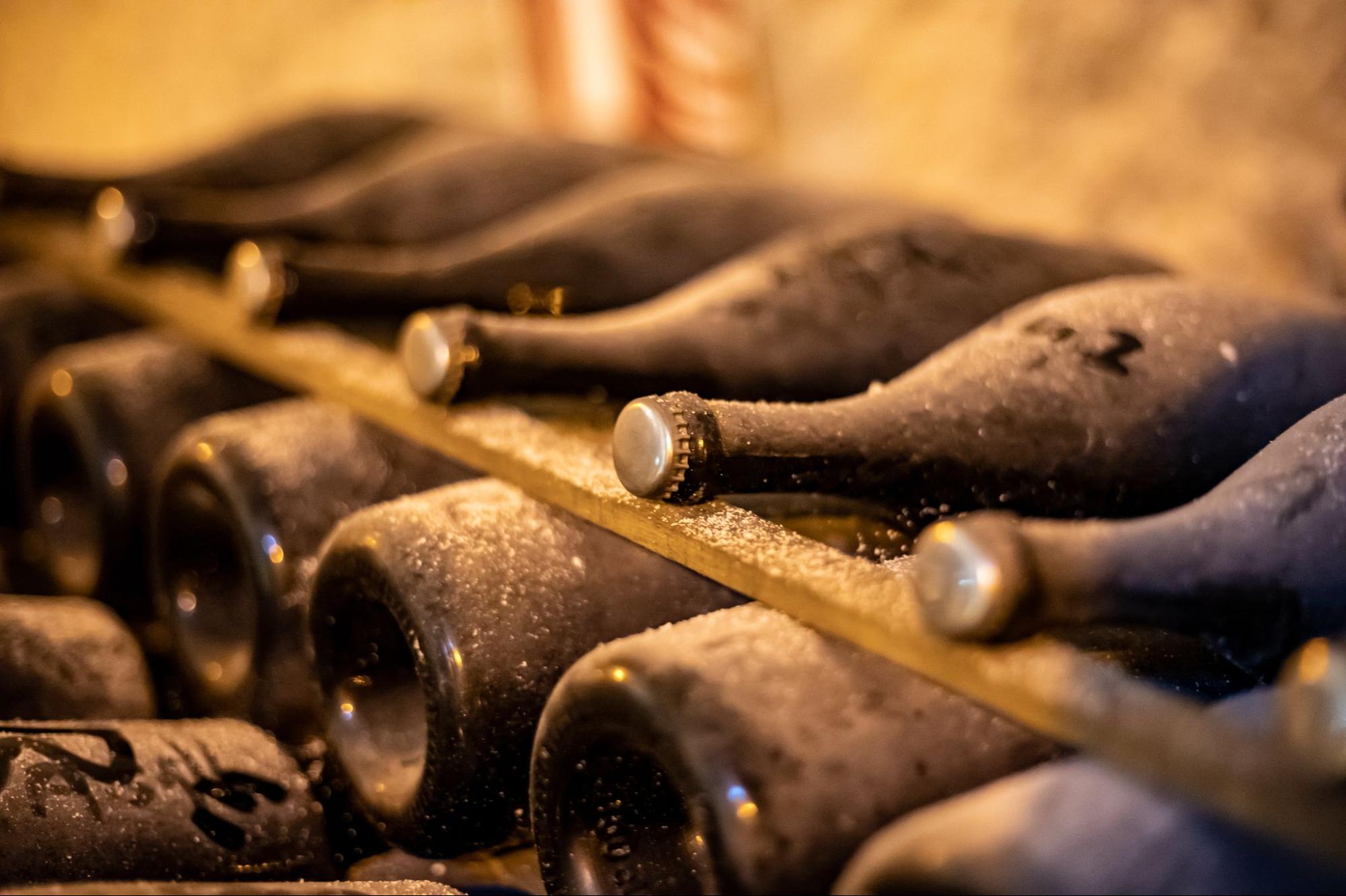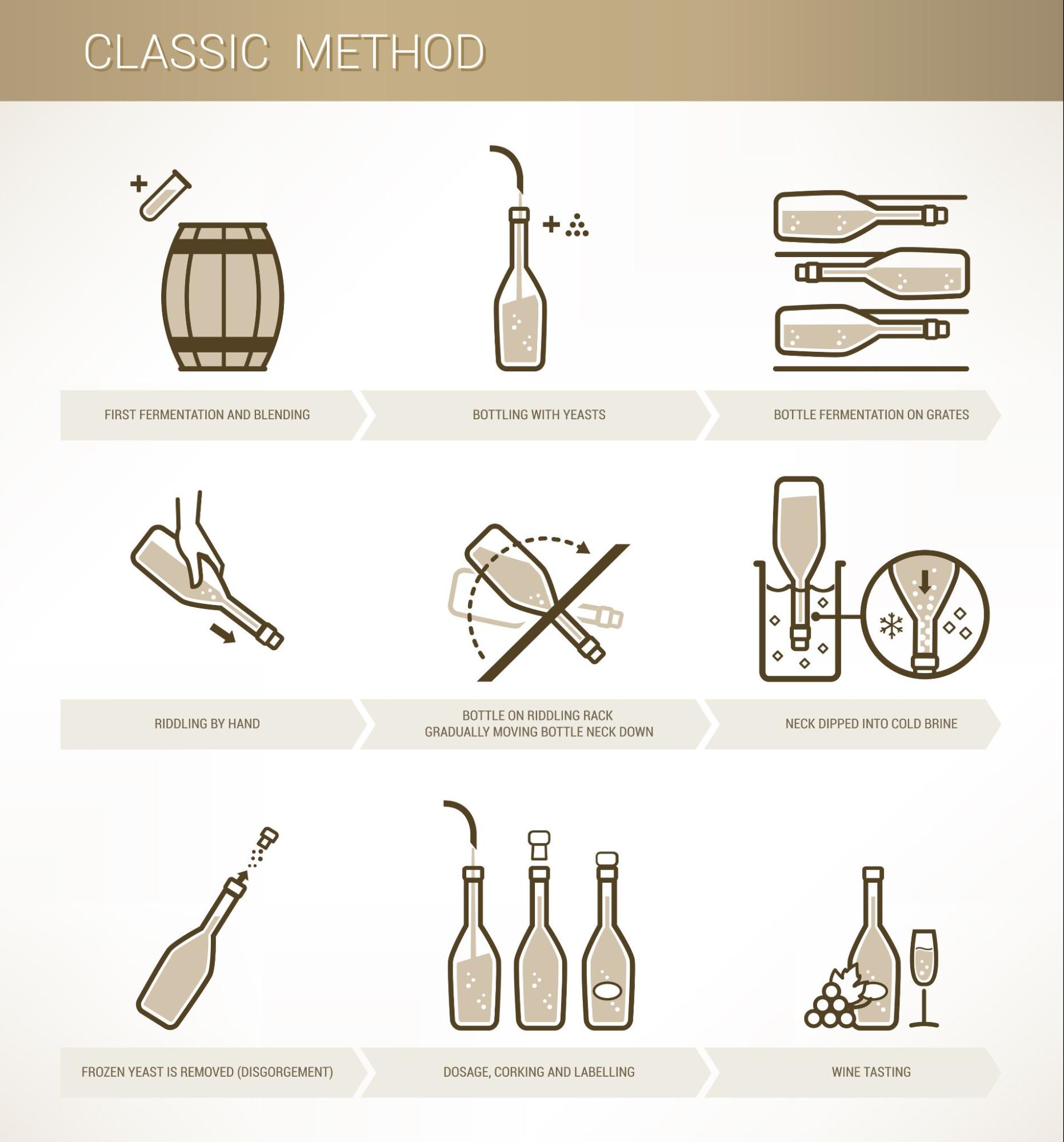- Wine Color/Type
- Top Occasions
- Unique Wines
- Surprise Me!
The World of Fizz - Production of Sparkling Wine
Welcome back to the world of fizz, where bubbles dance on your palate and every sip is a celebration. People have long associated sparkling wines with luxury, festivity, and refined taste. But have you ever wondered how those exquisite libations have been produced?
Deep and extensive underground caves in Champagne, with bottles waiting to be brought to the market. (Credit: barmalini, unsplash.com)
The Art of Lees Aging
In the process of crafting sparkling wines, one crucial stage is aging on the lees. Lees, consisting of dead yeast cells and other grape solids, impart unique flavors and textures to the wine. Winemakers age some sparkling wines on the lees after yeast cells break down in a process called autolysis.
This decision isn't arbitrary; it's a careful balance between preserving the wine's freshness and enhancing its complexity. Yeast cells help protect wine from oxidation, which can harm its quality. Wines that remain on the lees exhibit greater resistance to oxidation than disgorged wines of the same age.
However, there's a catch. The wine evolves more rapidly once disgorged the longer it lingers in this state. As a sparkling wine ages, its ability to withstand the sudden exposure to oxygen during disgorgement diminishes.
One great Champagne example is the famous Bollinger 'R.D.' ('recently disgorged'). People should enjoy it shortly after its release to experience the best of its flavor development.
[insert:wine:bollinger-r-d-extra-brut-champagne-recemment-degorge-2008]
Precision in Motion
To transform the wine into a sparkling expression, the wines require ridling and the removal of they yeast, the so-called disgorgement process.
Riddling is a method to move yeast sediment to the top of a bottle. This can be done by hand or with machines called gyro palettes. Through a gradual rotation from a horizontal to a vertical position, the lees gracefully gather, ready for their eventual extraction.
Although manual riddling requires endurance, taking up to eight weeks, its mechanized equivalent accomplishes the same result in a significantly shorter time—three to four days of systematic movement directed by high-precision equipment.
The bottles are then inverted and chilled, and undergo a swift encounter with frozen brine, solidifying the yeast sediment in the neck. With a deft removal of the crown cap, pressure within the bottle unleashes, propelling the frozen plug of yeast outwards.
A brief overview of the traditional winemaking process. (Photo: elenabsl/stock.adobe.com)
Deciphering the Dosage
Dosage is the last step in making sparkling wine. Acidity, sweetness, color and flavor are balanced carefully. This creates the perfect harmony. As wines mature on the lees, their demand for dosage diminishes, reflecting the evolving interplay of acidity and sweetness.
Yet, even in the absence of dosage, the journey continues. The Maillard reaction, ignited by the marriage of sugar and yeast compounds, orchestrates the development of toasted, vanilla-infused aromas. Patience becomes paramount as cork-sealed bottles undergo additional months of maturation, nurturing the emergence of these coveted flavors.
Tradition Meets Innovation
There are many new ways to produce sparkling wines that are different from the usual methods. Each method has its own special qualities and attractiveness.
The Transfer Method was created in the mid-20th century. It was designed to get rid of the manual riddling process.
The goal is to keep the important features of yeast autolysis intact. Producers mix wines from different bottles in tanks to have more control over consistency and make final adjustments. However, this method sacrifices traditional the traditional practice of riddling.
On the other hand, the Ancestral Method goes back to ancient times. In this method, we place partially fermented grape juice in bottles to create bubbles through natural fermentation. Embracing variability as its virtue, this method yields wines imbued with character and spontaneity, reminiscent of simpler times.
The Tank Method ushers in a new era of sparkling wine production. This method quickly delivers wines to market without any delays, preserving the pure fruit flavors and primary aromas.
Exploring Further Horizons
We will explore the details of sparkling wine production on our journey.
Join us next time as we discover how fermentation turns simple grapes into bubbly drinks. Cheers to the exciting journey ahead! Each sip of sparkling wine represents the hard work and love that goes into making it.
Lotte Gabrovits
Latest articles


